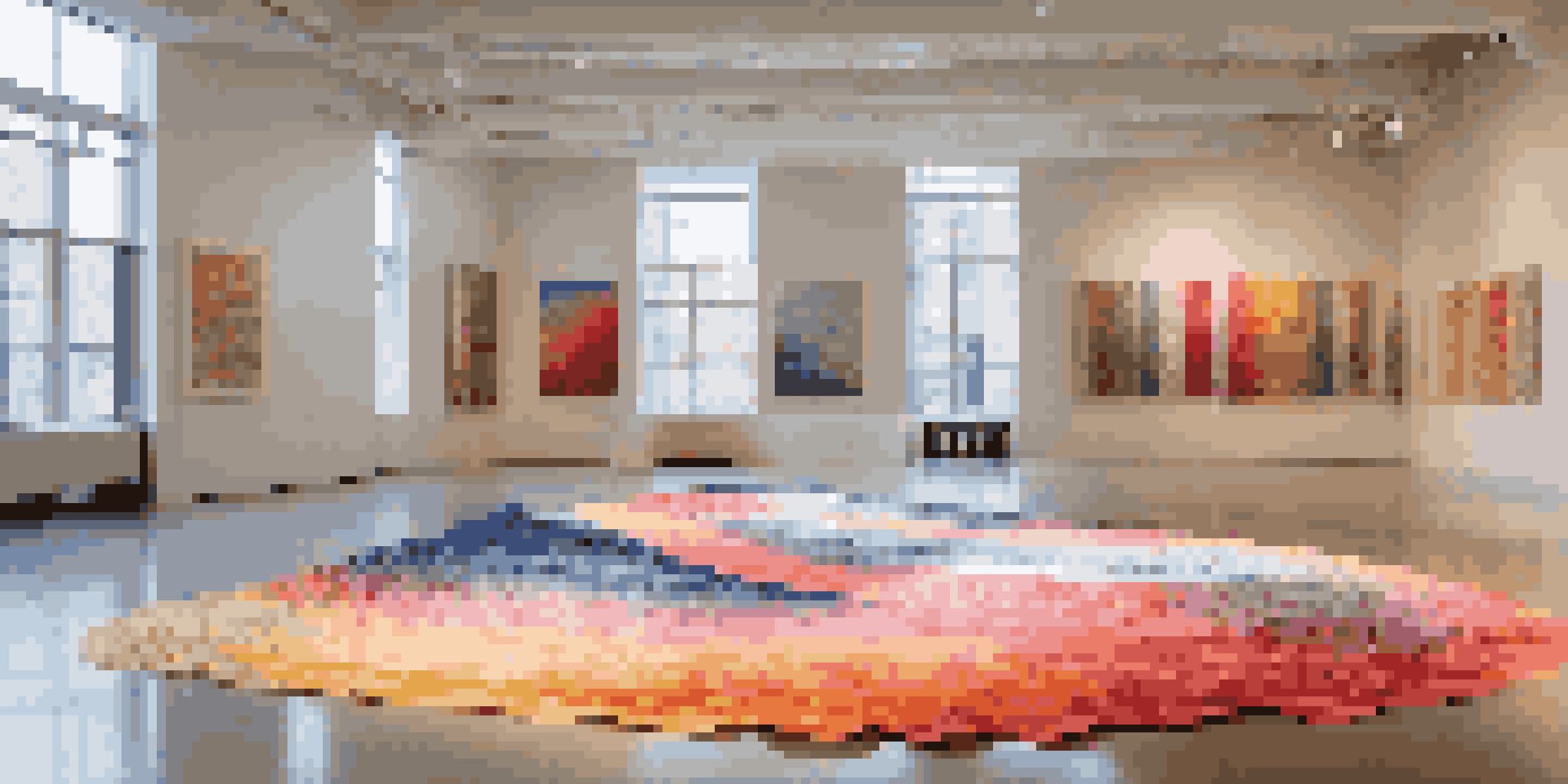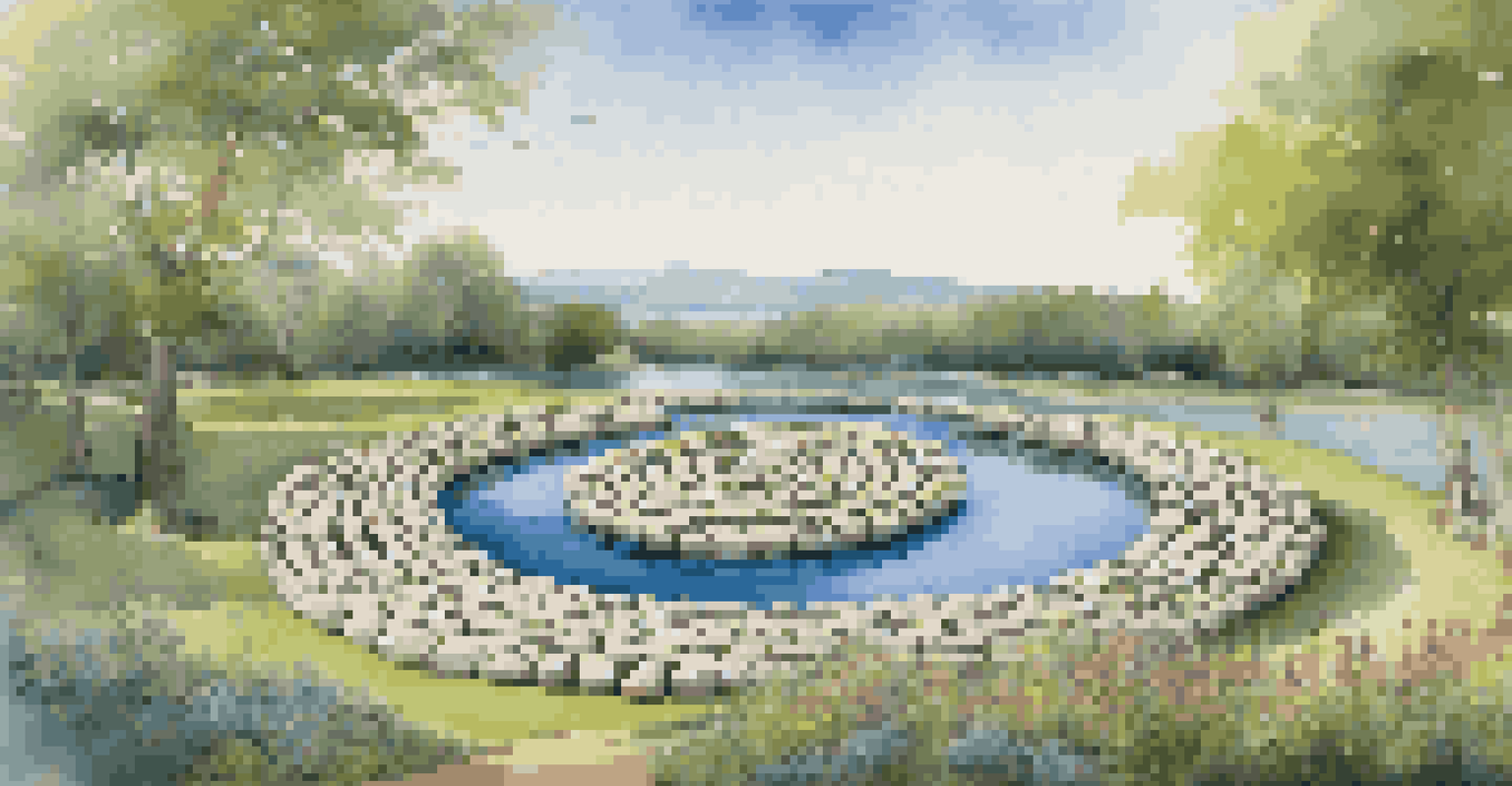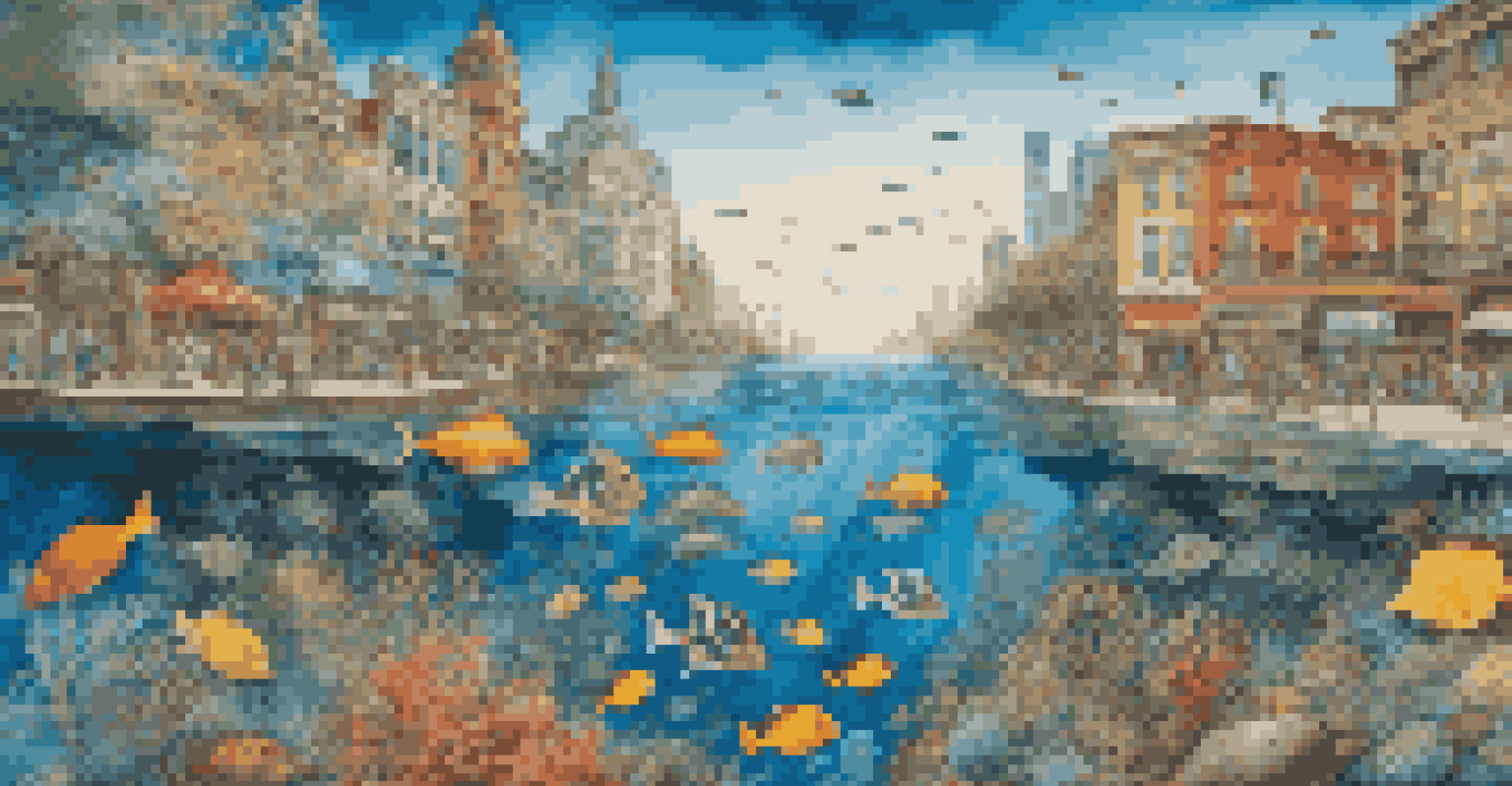Artistic Movements Focused on Environmental Sustainability

Introduction to Environmental Sustainability in Art
Art has always been a reflection of society, and today, many artists are focusing on environmental sustainability. This shift is not just a trend; it highlights the urgent need to address ecological issues through creative expression. By using their art, these artists aim to raise awareness about climate change, pollution, and biodiversity loss.
Art enables us to find ourselves and lose ourselves at the same time.
The integration of sustainability in art allows for a deeper connection between the viewer and the environment. Artists are using their platforms to provoke thought and inspire action, encouraging audiences to reconsider their relationship with nature. This movement is a call to not just appreciate art but to engage with the pressing environmental challenges we face.
From installations made of recycled materials to paintings that capture the beauty of endangered landscapes, the diverse expressions of eco-art are captivating viewers. As we delve deeper into various artistic movements, we'll uncover how creativity can play a pivotal role in promoting environmental sustainability.
Eco-Art: The Birth of a Movement
Eco-Art emerged in the late 20th century as artists began to address the growing environmental crisis. This movement encourages artists to create works that not only highlight ecological issues but also inspire sustainable practices. Artists often use materials that are reclaimed or naturally sourced, emphasizing the importance of reducing waste.

One notable example is the work of Andy Goldsworthy, who creates stunning sculptures using materials found in nature. His ephemeral pieces, which often decay and return to the earth, remind us of the beauty and transience of the natural world. This approach challenges viewers to appreciate the environment while recognizing its fragility.
Art as a Voice for Sustainability
Artists are using their creative platforms to raise awareness about ecological issues and inspire action towards environmental sustainability.
Eco-Art is about more than just aesthetics; it fosters a dialogue about our responsibilities towards the planet. By engaging with this movement, artists and audiences alike can explore innovative ways to promote sustainability through creativity.
Land Art: Connecting Nature and Creativity
Land Art, also known as Earth Art, is a movement that emerged in the 1960s, focusing on large-scale installations in natural landscapes. Artists like Robert Smithson and Christo and Jeanne-Claude created works that directly interacted with the environment, often using earth, rocks, and water. These installations challenge traditional notions of art by blurring the lines between the artwork and its surroundings.
The greatest threat to our planet is the belief that someone else will save it.
The impact of Land Art goes beyond visual appeal; it invites viewers to reflect on the relationship between humanity and nature. For instance, Smithson's Spiral Jetty, built in the Great Salt Lake, has become a symbol of environmental change as it interacts with the shifting landscape over time. This dynamic relationship illustrates how art can serve as a commentary on ecological issues.
As we explore Land Art, we see how it not only celebrates nature but also raises awareness about its preservation. By immersing ourselves in these installations, we are encouraged to consider our role in protecting the environment.
Installation Art: Transforming Spaces with a Message
Installation art offers a unique platform for artists to convey messages about environmental sustainability. By transforming physical spaces into immersive experiences, these artists engage viewers on multiple sensory levels. The goal is often to provoke thought and inspire action regarding ecological issues.
One prominent example is Olafur Eliasson's 'The Weather Project,' which used light and mist to create a surreal experience in the Tate Modern. This installation prompted visitors to reflect on climate change and our relationship with nature. Such works can leave a lasting impact, encouraging viewers to consider their everyday choices and the environment.
Eco-Art: A Movement for Change
Eco-Art encourages artists to utilize reclaimed materials, fostering a dialogue about our responsibilities towards the planet.
Through innovative use of materials and space, installation art can act as a catalyst for change. By immersing audiences in thought-provoking experiences, artists make the conversation about sustainability accessible and engaging.
Sustainable Fashion: Art Meets Eco-Consciousness
Sustainable fashion is an artistic movement that merges creativity with environmental responsibility. Designers are increasingly focusing on eco-friendly materials and ethical production processes, challenging the fast fashion industry. This approach not only reduces waste but also promotes a more conscious consumer culture.
Fashion designers like Stella McCartney and Eileen Fisher are leading the charge, using organic fabrics and innovative recycling methods to create stylish, sustainable clothing. Their work showcases that fashion can be both beautiful and environmentally friendly, encouraging consumers to make more informed choices.
By viewing fashion as an art form, we can appreciate the creativity involved while also recognizing its impact on the planet. The sustainable fashion movement is a testament to how artistic expression can drive positive change in our world.
Public Art: Sparking Community Conversations
Public art plays a crucial role in promoting environmental sustainability by engaging communities in meaningful conversations. Murals, sculptures, and installations in public spaces can raise awareness about ecological issues while beautifying neighborhoods. This accessibility invites dialogue and encourages community involvement in sustainability efforts.
For instance, the 'Trash Isles' campaign, which aimed to raise awareness about ocean pollution, utilized public art to engage communities worldwide. By transforming waste into art, the project highlighted the urgency of addressing plastic pollution and inspired collective action.
Public Art Engaging Communities
Public art serves as a catalyst for community conversations about environmental challenges, promoting collective action for sustainability.
Public art not only serves as a visual reminder of environmental challenges but also as a call to action. It fosters a sense of responsibility among community members, encouraging them to work together for a more sustainable future.
The Future of Art and Environmental Sustainability
As we look to the future, the intersection of art and environmental sustainability is likely to grow even more pronounced. Artists are continually finding innovative ways to address ecological issues through their work, from virtual reality experiences to community-based projects. This evolution reflects a broader societal shift towards sustainability.
The rise of technology in art also offers new opportunities for engagement. For example, augmented reality can create immersive experiences that educate viewers about environmental issues in real-time. This integration of technology and art can amplify the message of sustainability, reaching a wider audience.

Ultimately, the future of artistic movements focused on environmental sustainability is bright. By harnessing creativity, artists can inspire change and foster a deeper understanding of our connection to the planet.